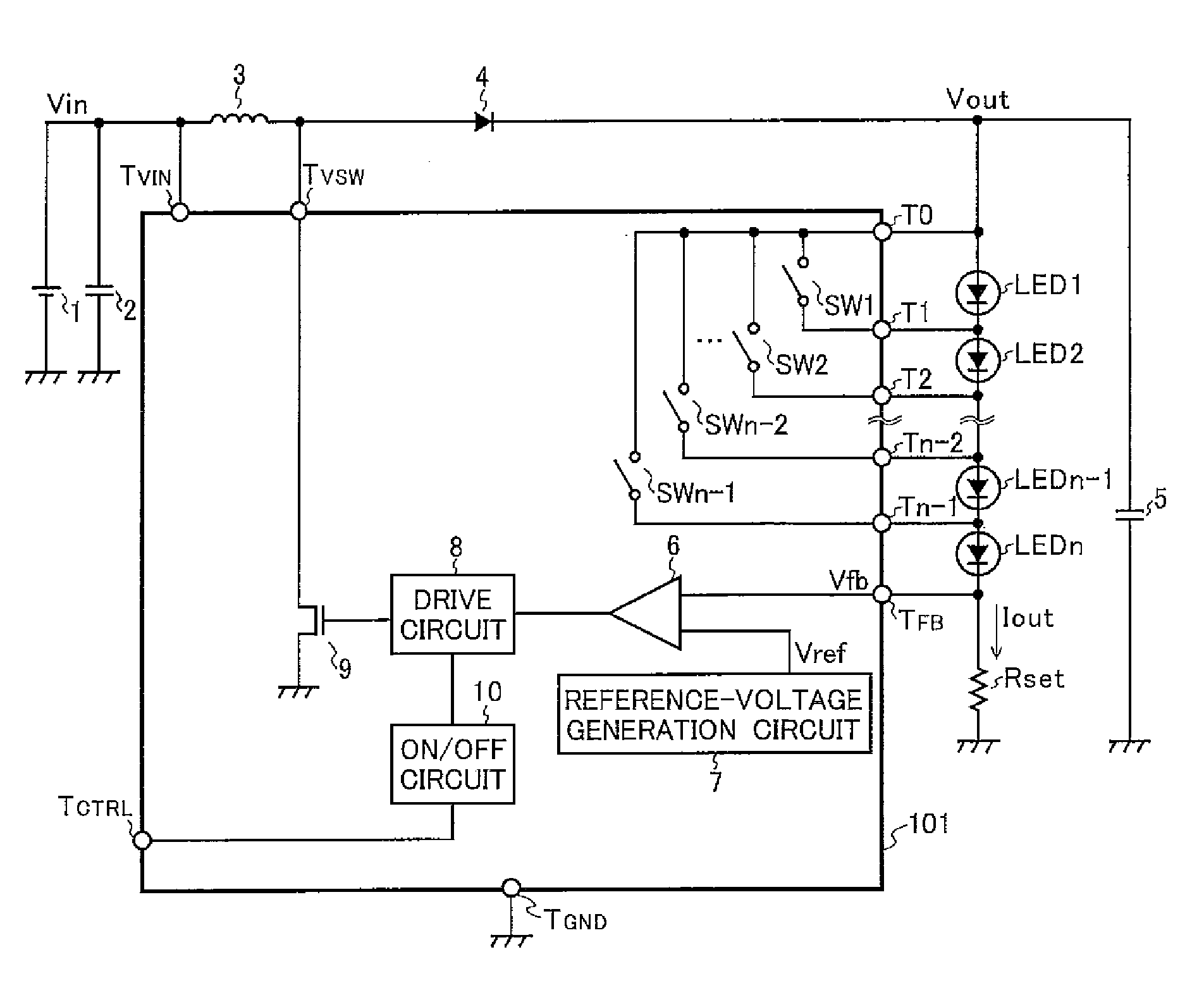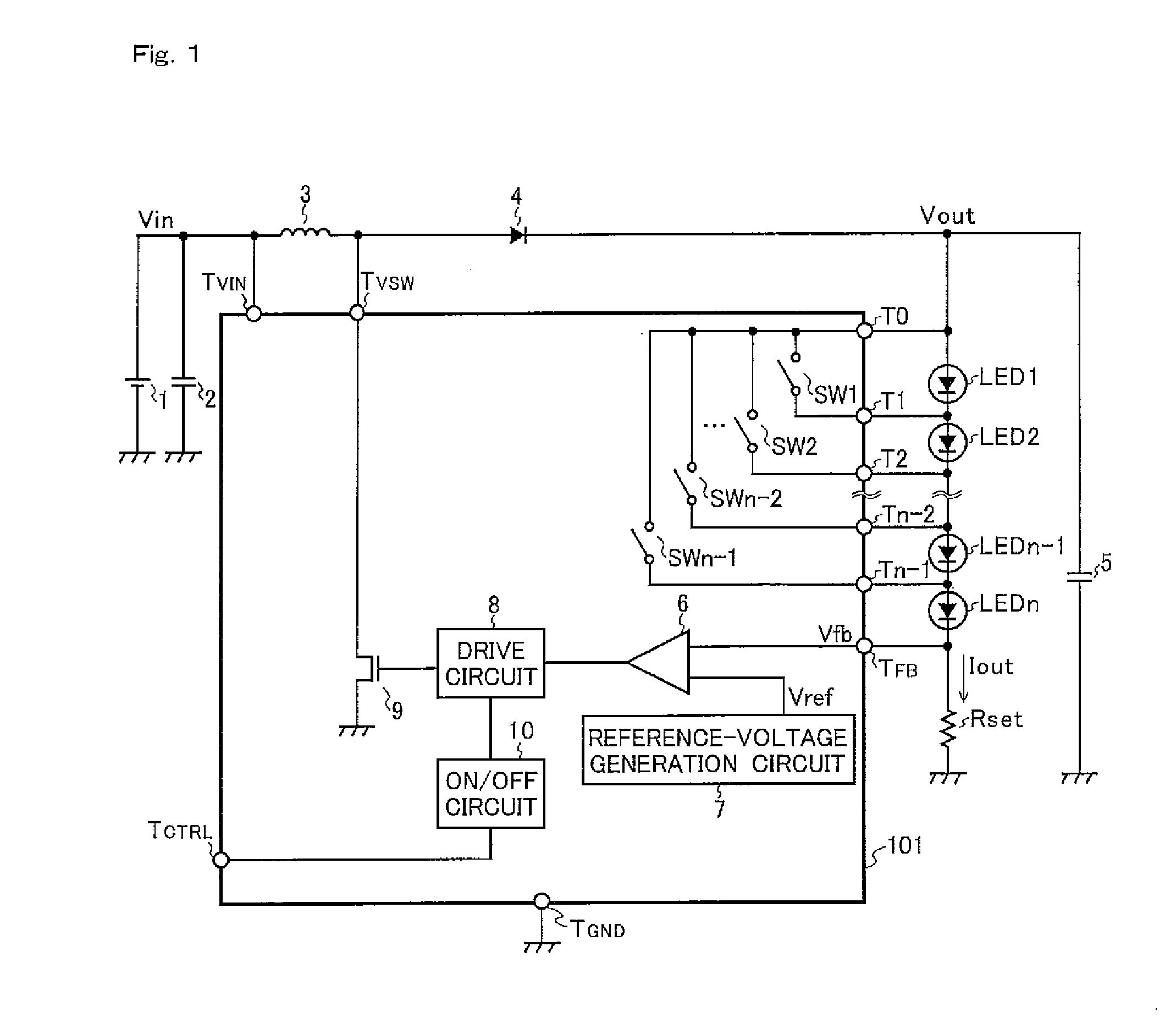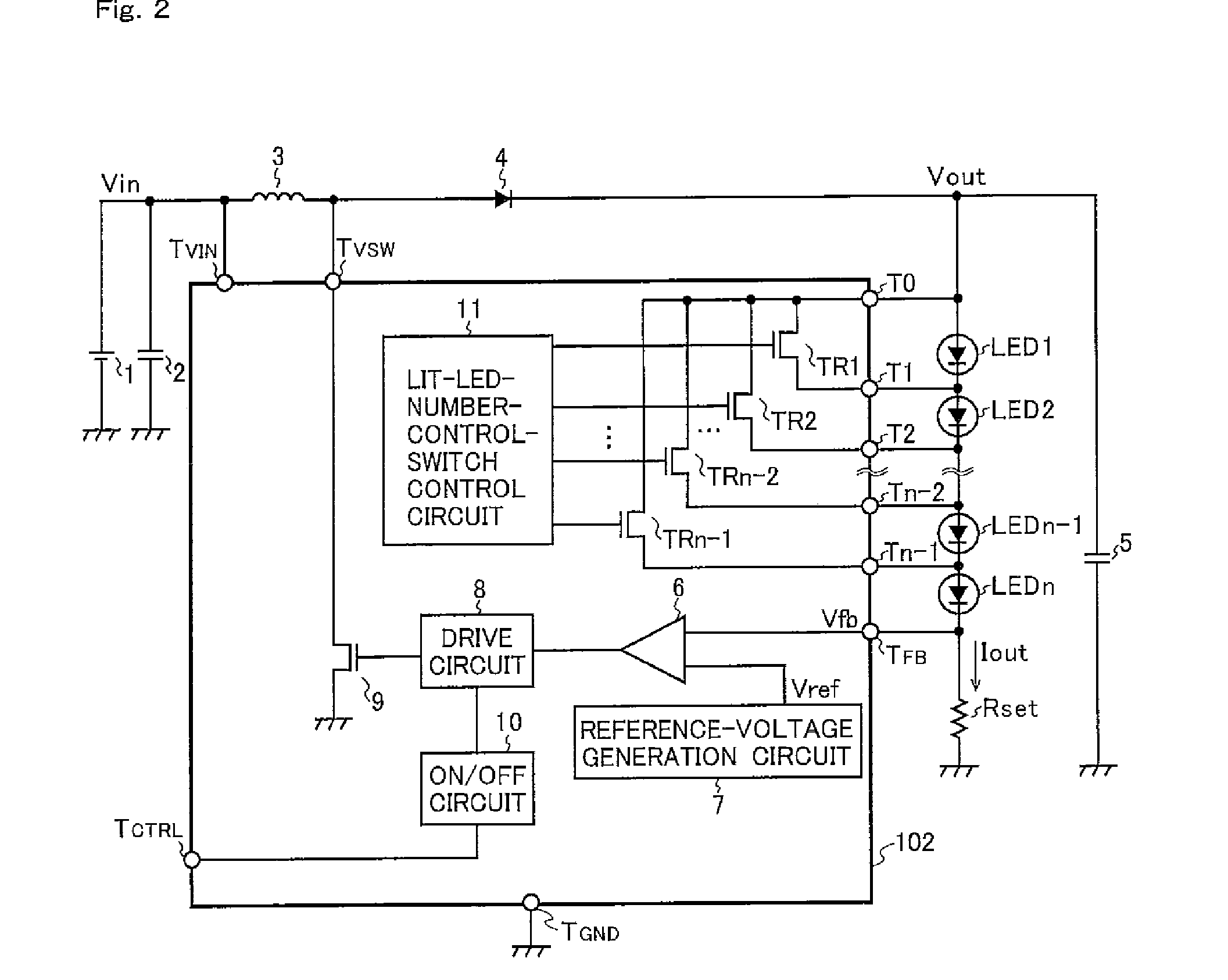Light-emitting-diode drive circuit
a technology of light-emitting diodes and drive circuits, which is applied in the direction of electric variable regulation, process and machine control, instruments, etc., can solve the problems of high frequency noise and infeasibility of light-emitting-diodes drive circuits, and achieve the effect of reducing surge voltag
- Summary
- Abstract
- Description
- Claims
- Application Information
AI Technical Summary
Benefits of technology
Problems solved by technology
Method used
Image
Examples
first embodiment
[0041]The light-emitting-diode drive circuit shown in FIG. 1 according to the invention differs from the conventional light-emitting-diode drive circuit shown in FIG. 10 in that the step-up chopper regulator IC 100 is replaced with a step-up chopper regulator IC 101. The step-up chopper regulator IC 101 differs from the step-up chopper regulator IC 100 in that it is additionally provided with: lit-LED-number control switches SW1 to SWn−1; a terminal T0 to which one ends of the lit-LED-number control switches are all connected; and terminals T1 to Tn−1 to which the other ends of the lit-LED-number control switches are respectively connected. The terminal T0 is connected to the anode of a light-emitting diode LED1; a terminal Tk is connected to the node between the cathode of a light-emitting diode LEDk and the anode of a light-emitting diode LEDk+1 (k is any natural number equal to or greater than one but equal to or less than n−1).
[0042]With this configuration, when one of the lit-L...
sixth embodiment
[0057]The lit-LED-number-control-switch control circuit 11″ controls the turning on and off of the lit-LED-number control switches (here, the transistors TR1 to TRn−1) according to the signal received through the terminal TSEN. In this embodiment, since the signal received through the terminal TSEN is outputted from an illumination sensor 13, the lit-LED-number-control-switch control circuit 11″ controls the turning on and off of the lit-LED number control switches (here, the transistors TR1 to TRn−1) according to the signal outputted from the illumination sensor 13. For example, as the intensity of illumination detected by the illumination sensor 13 decreases, the lit-LED-number-control-switch control circuit 11″ increases the number of light-emitting diodes lit among the light-emitting diodes LED1 to LEDn. Thus, with the light-emitting-diode drive circuit shown in FIG. 6 according to the invention, it is possible to control light according to the intensity of ambient light.
[0058]A...
eighth embodiment
[0060]An eighth embodiment of the present invention will now be described. The configuration of a light-emitting-diode drive circuit according to the invention is the same as that (see FIG. 1) of the light-emitting-diode drive circuit according to the first embodiment of the invention.
[0061]According to the method in which a chopper regulator or the like is used as a drive circuit and light-emitting diodes are connected in series so that the same amount of forward current is passed when the light-emitting diodes are driven, when any one or more of the n light-emitting diodes connected in series with the output terminal of the drive circuit become defective and thus open-circuited, all the light-emitting diodes are usually turned off.
[0062]In contrast, in the light-emitting-diode drive circuit according to the eighth embodiment of the invention, even when any one or more of the light-emitting diodes LED1 to LEDn−1 become defective and thus open-circuited, one of the lit-LED-number co...
PUM
 Login to View More
Login to View More Abstract
Description
Claims
Application Information
 Login to View More
Login to View More - R&D
- Intellectual Property
- Life Sciences
- Materials
- Tech Scout
- Unparalleled Data Quality
- Higher Quality Content
- 60% Fewer Hallucinations
Browse by: Latest US Patents, China's latest patents, Technical Efficacy Thesaurus, Application Domain, Technology Topic, Popular Technical Reports.
© 2025 PatSnap. All rights reserved.Legal|Privacy policy|Modern Slavery Act Transparency Statement|Sitemap|About US| Contact US: help@patsnap.com



